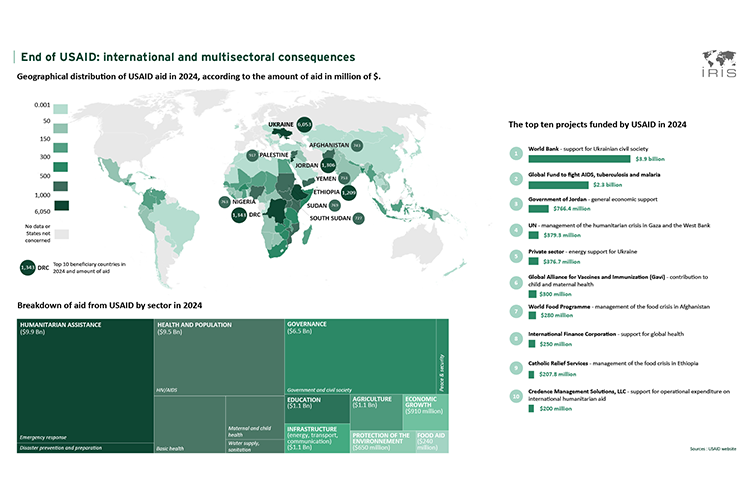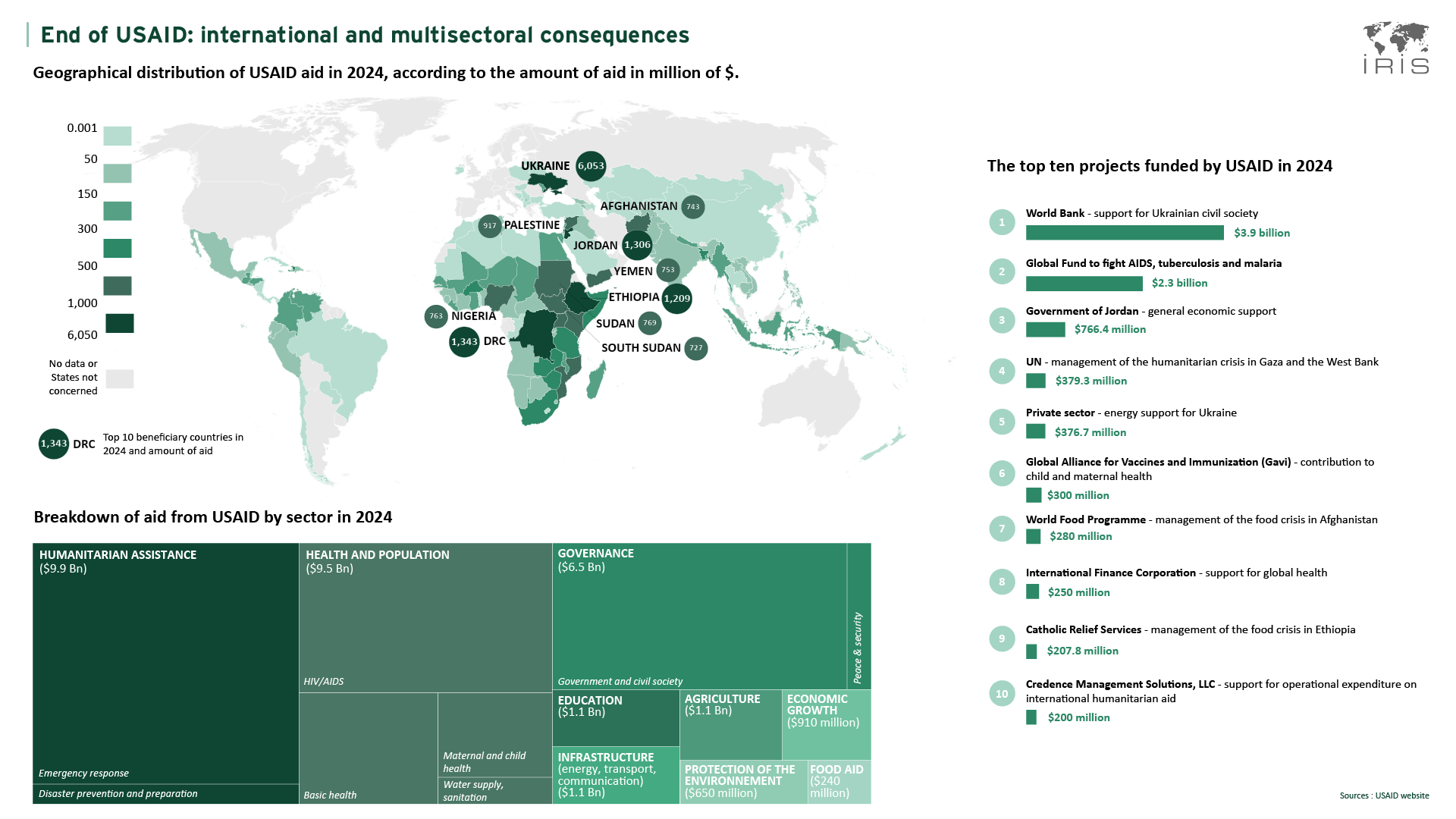Infographies / Human Security
13 March 2025
End of USAID: international and multisectoral consequences

On 20 January 2025, on his return to the presidency of the United States, Donald Trump signed an executive order suspending all programmes of the United States Agency for International Development (USAID) for ninety days. On 3 February 2025, Elon Musk, the former head of the Department of Government Efficiency (DOGE), declared the permanent closure of USAID, which he described as a “criminal organisation”. Finally, on 10 March, Secretary of State Marco Rubio announced the elimination of 83% of USAID’s programmes, with the remaining 17% being transferred to the State Department.
USAID, founded in 1961 under the Kennedy administration, was a pillar of international aid. Its funding ($42 billion in 2023, $35 billion in 2024) accounted for more than 40% of global humanitarian aid in 2024. USAID financed projects in 158 countries and provided up to 50% of total humanitarian aid for some of them.
The dissolution of USAID brought thousands of vital projects around the world to an immediate halt. In Ukraine, assistance to independent media has been cut off. In Myanmar, hospitals have closed, depriving thousands of people of healthcare. In Cameroon, HIV/AIDS vaccination programmes have been suspended, threatening the health progress made in recent years. In the Democratic Republic of Congo and Nepal, initiatives to end malnutrition have been stopped, exacerbating food insecurity. In Cambodia, demining operations have been halted, exposing rural populations to the dangers of landmines.
This is a historic turning point in US foreign aid policy. While the full repercussions are not yet known, this decision will primarily affect vulnerable populations, and poses a threat to many global challenges by destabilising the international aid ecosystem in an unprecedented way.
This cartographic and infographic assess the scale of aid from USAID for 2024 before it is dismantled, both geographically and by sector, and to gauge the consequences of its abolition.




